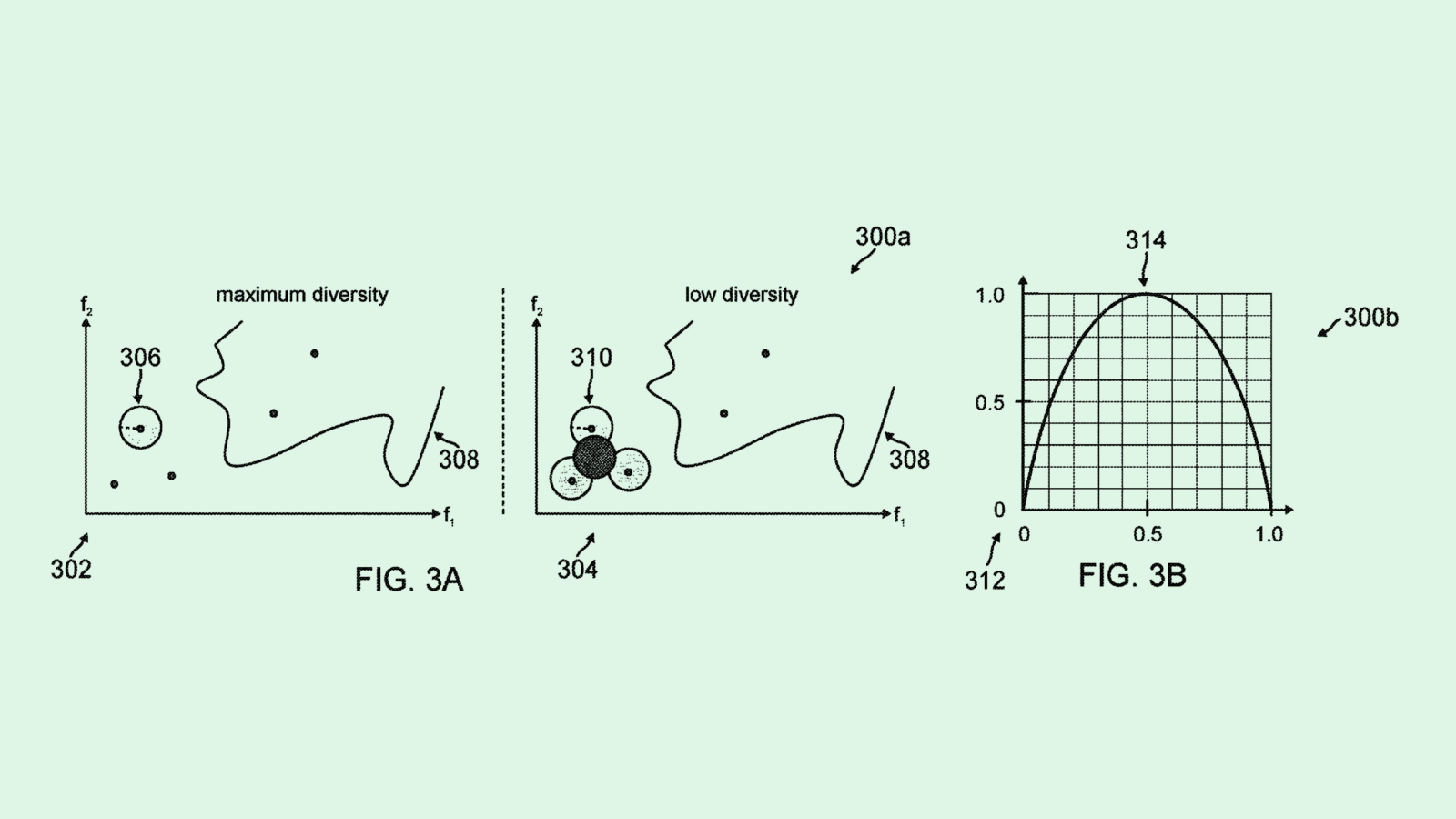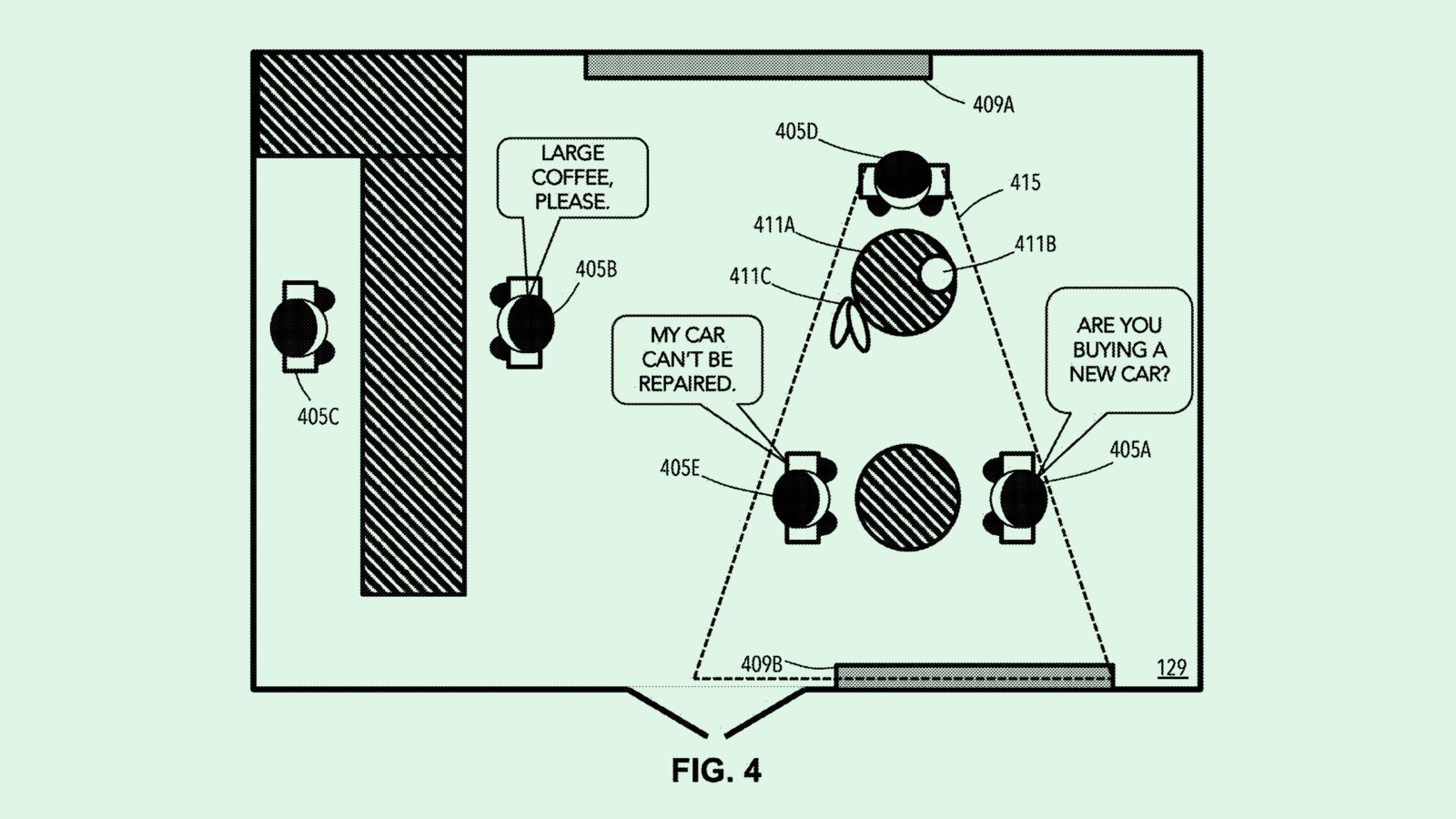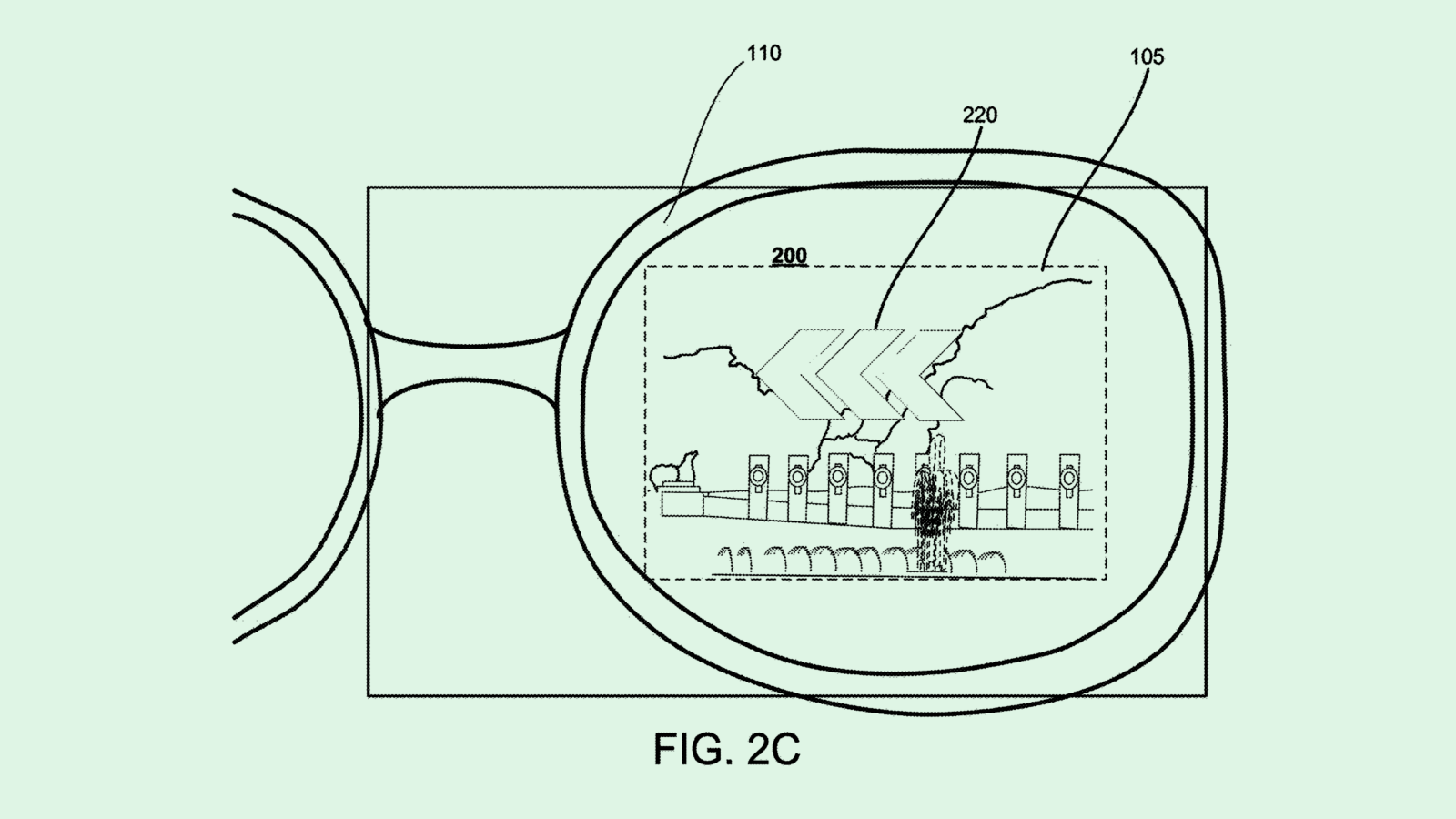Happy Thursday and welcome to Patent Drop!
Today, PayPal’s patent to keep its decision-making models fair highlights the importance of tackling bias in financial AI platforms. Plus: Oracle wants an NPC to observe your metaverse behavior, and Google wants to keep you from swerving.
But first, a quick word from our sponsor: These days, the only certainty on the internet is that your personal data is being exploited on a spectrum of targeted advertising (on the benign end) to truly malicious actors (on the fraud end). It’s not just your shopping preferences for sale — it’s your SSN, your address, and scores of data only your spouse should be privy to. It’s time to take control — Incogni can help wipe your data from the internet and stop cyber criminals in their tracks. Explore their data removal service now.
And a quick programming note: We’ll have a special report on Monday discussing Apple’s AI strategy and patents ahead of its Worldwide Developers Conference.
Let’s take a peek.
PayPal Tips the Scales
As the tech industry continues full-steam ahead on AI, PayPal may be looking at ways to do it right.
The company seeks to patent a system for adjusting training data sets for “fairness-aware artificial intelligence models.” This patent aims to ensure that its AI models, particularly those used in transaction decision-making, are not trained on biased data.
PayPal’s system picks a sample of data from a larger training data set to create a control group of training data that “acts as a baseline for AI model training.” This sampling is created specifically for fairness, with each data point given two different scores: a diversity score and a “model attribution” score, which determines how informative a data point is to the model as a whole.
This data set is then used to train or retrain models to “adjust, minimize, and/or eliminate bias in the training data set.” These models “provide better decision-making and predictive outputs by weighing many diverse and distributed data points, for example, by preventing mistakenly allocating outputs when overly training on the same or similar data,” PayPal said in the filing.
PayPal noted that this sampling scoring method may be generalized and plugged into different models, use cases, or training algorithms – meaning it can be reprogrammed to test for more than just bias.

This isn’t PayPal’s first rendezvous with AI. The company has filed several patents that could implement AI throughout its fraud-detection practices, as well as patents to track user behavior with neural networks. The company also announced plans earlier this year to roll out an AI platform that allows merchants to reach customers more easily.
But the “move fast, break things” ethos of Silicon Valley has extended to AI, leading to a landscape of tech firms that are extremely data-hungry as they continue to grow massive foundational models. And the growth at all costs mentality has led to ethical issues, said Brian Green, director of technology ethics at the Markkula Center for Applied Ethics at Santa Clara University.
“Most people take the approach of, ‘we can’t do ethics if we don’t have the AI in the first place,’ so they very much concentrate on AI,” said Green. “But sometimes (ethics) comes as an afterthought, which is always a risky approach to it.”
One of those issues is bias – or, as this patent calls it, “fairness.” AI models often exhibit and exaggerate biases that aren’t caught in training. This can have particularly dire consequences when those AI models are used in financial decision-making. And regulators like the Consumer Financial Protection Bureau and the Federal Reserve have taken notice.
“Historically the financial industry has had serious issues with bias and lending,” Green said. AI models that replicate those biases can cause significant harm on a wide scale.
Many companies are trying to determine how to squash bias in their own AI tools, tackling the issue in image models and lending. Akin to the focus of PayPal’s patent, the solution to bias is often in fixing the training data itself, since a model is only as good as the data it’s fed. “It’s good to see companies filing these sorts of patents that show they’re doing the work,” said Green. “It sends an important signal that they find it to be worthwhile work.”
Are You Looking Out for Your Own Safety?
We invest in home security systems, install security cameras on our doors, and lock our cars…but what are we doing to proactively protect our personal data?
Every day, data brokers are mining our information, making it their business to collect our home address, SSN, phone numbers, and other sensitive data. Then they’re selling it to the highest bidder (it’s a truly massive market) putting us at high risk for scams, fraud, and exceptionally annoying spam calls.
What can you do to protect yourself and those you hold close in your life? Try Incogni. When you sign up, Incogni goes to bat for you – hunting down your personal information and removing it from the darkest corners of the internet. Plus, Incogni just launched a Friends and Family Plan, allowing you to add up to four additional members.
Keep your personal data personal – Patent Drop readers can try Incogni for 55% using code TDU55.
Oracle’s Ad NPC
While much of Big Tech’s attention has shifted the focus to AI, Oracle may be looking to squeeze some money out of the metaverse.
The company is seeking to patent “contextual targeting based on metaverse monitoring.” This tech aims to capture information about user behaviors and interactions in artificial reality contexts to distribute “contextually targeted advertisements.”
“As metaverses evolve into the mainstream, many business(es) are endeavoring to find effective techniques for placing advertisements inside virtual environments,” Oracle said in the filing.
Oracle’s system deploys an “observer avatar” to capture user audio, video, image, and text data, along with metadata – such as time, location, and usernames – describing the surrounding scene. The observer avatar can be an active participant in the metaverse, such as a character that users can interact with, or a passive observer.
Those observations can be used to determine “contextual segments,” or descriptors of the objects, places, and people surrounding it, to classify portions of the surroundings. For example, in a virtual home design platform, the system may watch which kinds of furniture the user chooses, and pick up contextual descriptions such as “modern,” “classic,” or “industrial.”
This information is used to build a profile on the user, Oracle noted, with information on the actions or behaviors they displayed in their environment. This profile is used for targeted advertising, both in the artificial reality environment and in “different communication channels external to the metaverse,” Oracle said.

Artificial reality can fully immerse someone in an experience, which can be incredibly useful in advertising, said Jake Maymar, AI strategist at The Glimpse Group. And using targeting in the way Oracle’s patent suggests could open the door for metaverse ads that don’t feel like ads at all, he said.
“You can create a world that people want to return to, and you can build something really powerful for brands,” said Maymar.
But this method of targeting is useful not just for creating ads, but for the data itself that’s collected, Maymar noted. Many tech companies are working on ways to read facial expressions, eye movements, and neural signals. Using those capabilities to track user reactions to ads could unlock an in-depth pool of data that allows for even more personalized targeting, he said.
The problem, however, is the potential for backlash, said Maymar. “People react very strongly to ads, especially if you can’t escape it.” This is where native advertising may come in handy, he said. “It’s not intrusive, and you don’t really think about it. You don’t even really realize that it’s advertising.”
Though a patent like this may be expected from a company like Meta or Apple, it’s a bit out of left field for an enterprise-focused company like Oracle. But Oracle’s bread and butter is data and database products. And at the end of the day, data is at the heart of this patent, said Maymar, detailing a way to access and store a large amount of useful data for advertisers. And as tech firms seek to recoup some money from expensive metaverse bets and prepare for wider adoption of AR, he added, Oracle may see a lucrative opportunity.
Google Turns Heads
Google wants to keep your vision from getting blurry.
The company filed a patent application for “map-aided inertial odometry” in augmented reality devices using neural networks. Google’s filing describes a system that aims to make AR-based mapping more robust using two sets of “Six Degrees of Freedom” poses.
For reference, Six Degrees of Freedom refers to the directions a body can move throughout space: forward and backward, up and down, left and right, as well as the three rotational movements.
Google’s system captures two sets of these poses using different components on the glasses to better understand user orientation. After capture, these pose sets are combined to provide more accurate tracking and navigation.
For the first set of poses, the system uses map data related to the physical environment, and image data captured from the camera on the AR glasses. This gives the system an idea of the user’s position and orientation in the world around them.
The second set of poses is captured by an “inertial measurement unit,” which tracks rotational velocity and acceleration. These poses are predicted using a neural network that uses less energy than the camera, “resulting in longer battery life for the AR smartglasses,” Google said. These measurements are also helpful if the vision sensors are obscured in any way.

Google’s primary focus over the past year has been making its large language model even larger. However, several of its patents signal that it’s still interested in the tech, including tech to monitor brain waves, track hand movements, and make AR glasses less bulky.
And these inventions may be more than just research: Last week, the company announced a partnership with AR headset developer Magic Leap. The details are fuzzy, with Magic Leap’s Chief Technology Officer Julie Larson-Green telling Reuters “We’re thinking, putting our expertise and [Google’s] expertise together, there’s lots of things we could end up doing.”
The company may be seeking help from Magic Leap in the AR space after it reorganized its hardware unit back in January, axing its AR team. However, the company said at the time that it is still “deeply committed to other AR initiatives, such as AR experiences in our products, and product partnerships.”
Plus, as the tech in this patent relies on the tracking and prediction capabilities of neural networks, it may indicate that Google is taking its AI strength and applying it to AR development as firms like Meta and Apple continue to plug away at the tech.
Extra Drops
- Nissan wants you to be a defensive driver. The company filed a patent application for “predicting behavior” of other vehicles and implementing driving assistance.
- Salesforce wants to make sure you’re getting the help you need. The tech firm is seeking to patent a system that uses machine learning for “targeting help content.”
- Sony wants to know if the robots are going haywire. The company wants to patent “autonomous anomalous device operation detection.” How’s that for a tongue twister?
What Else is New?
- The FTC and the Justice Department are reportedly ready to open antitrust probes into Nvidia, Microsoft and OpenAI for their influence on the AI industry.
- Salesforce is opening its first AI center in London focused on collaboration, AI training and upskilling programs as part of its $4 billion investment in the U.K.
- Learn AI in 5 Minutes a Day. AI Tool Report is one of the fastest-growing and most respected newsletters in the world, with over 550,000 readers from companies like OpenAI, Nvidia, Meta, Microsoft, and more. Their research team spends hundreds of hours a week summarizing the latest news, and finding you the best opportunities to save time and earn more using AI. Sign up with 1-Click.*
* Partner
Patent Drop is written by Nat Rubio-Licht. You can find them on Twitter @natrubio__.
Patent Drop is a publication of The Daily Upside. For any questions or comments, feel free to contact us at patentdrop@thedailyupside.com.

